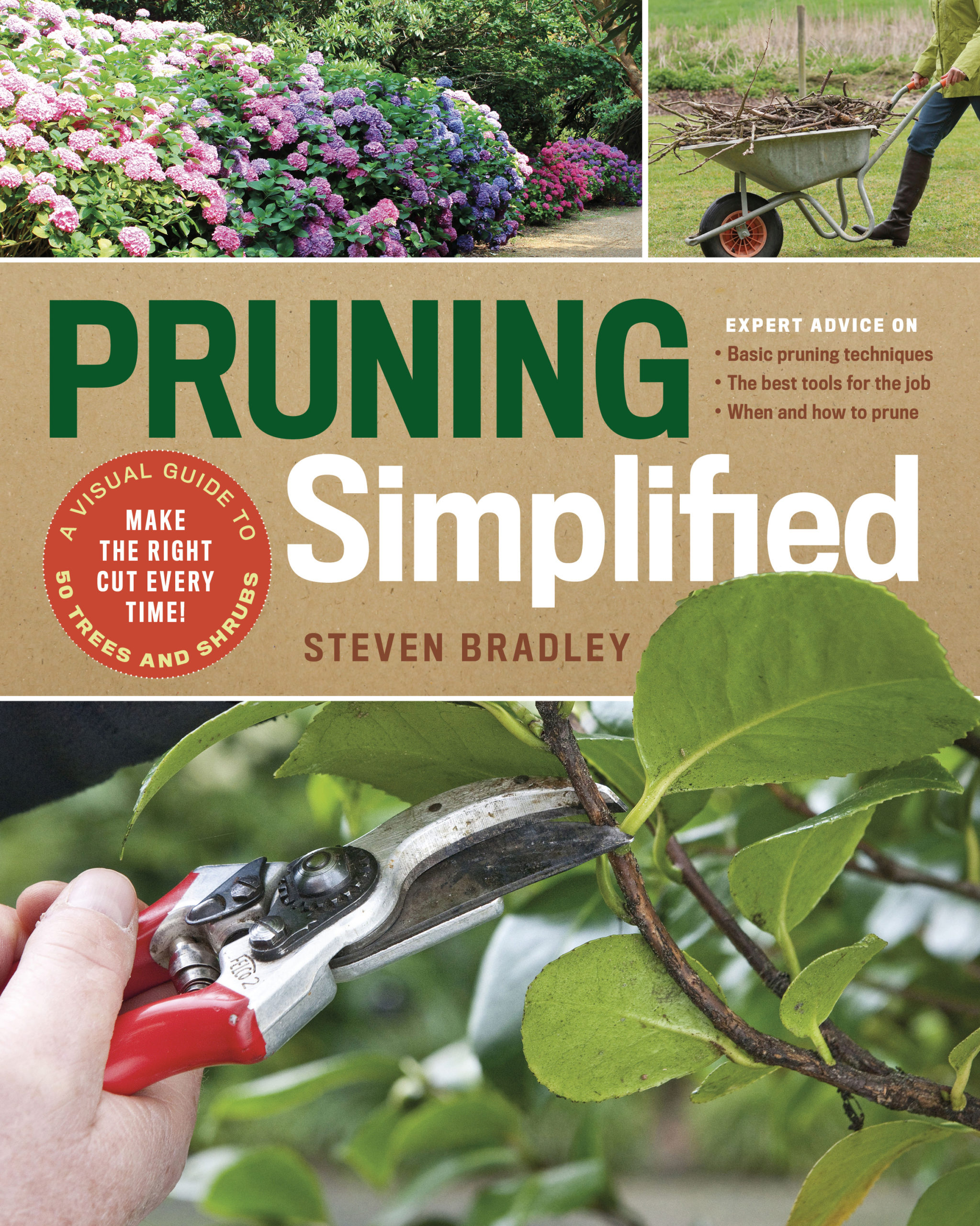By Steven Bradley
Published by Timber Press
133 SW 2nd Ave. #450
Portland OR 97204
Timberpress.com
8″ x 10″
Softcover
192 pages
The author, Steven Bradley, taught horticulture in colleges for two decades in England. With experience in practice as well as education, he shows, with drawings, the correct place to cut and why. Because all the instruction uses the same headings, students learn the difference between “formative pruning” (shaping when the plant is young), “routine pruning” (regular, sometimes annual removal of material), and “remedial pruning” (what to do with older specimens). Knowing the different reasons for helping a plant stay healthy and beautiful, is half the student’s battle – practice is the other half, meaning one still has to pick up the cutters to get started. And the author goes into detail, with photos of the equipment needed along with the whys and how-tos.
If a student needs “hand-holding” to get started, this book will give a visual picture of actions to take, a time frame for completing pruning, and near the end, some style choices with photos that inspire action. Getting a gardener off the fence and jumping into the game is often the ticket. We can see the art of a nicely pruned tree, but we each have different learning styles, only discovered in the process of doing.
Would you like to create a little hedge? Tables at the back of the book list plants to try. Have you pruned a plant at the wrong time of year and seen damage? A table lists the best time to prune your plant. Confused by lingo? The glossary sorts out special pruning terms.
A garden is not a basement or garage controlled by a knob on the wall. Living plants require a relationship that inspires cooperation, including shaping and removal of unruly growth. We give to the plants some help in keeping them happy and we are rewarded in wonderful ways when we see the results of our efforts.
Steven Bradley defines the pruning tasks for 50 plants that grow in England, but does not include USDA Hardness Zones. We can look up that information online by Googling the “plant name + zone” to see if we can grow it in our area.
Pruning Simplified is about pruning what we railroad gardeners call “full-size” or “1:1” size plants. Although few of the plants shown in the book would be planted next to the track, their miniature or dwarf versions that grow slowly still need the same type of pruning, only possibly more frequently. Again, we can Google “miniature + a plant name” to research dwarf choices.
Knowing where to prune, when to remove, and why it’s good for the plant will help to ensure success, healthy plants and happy railroaders.














